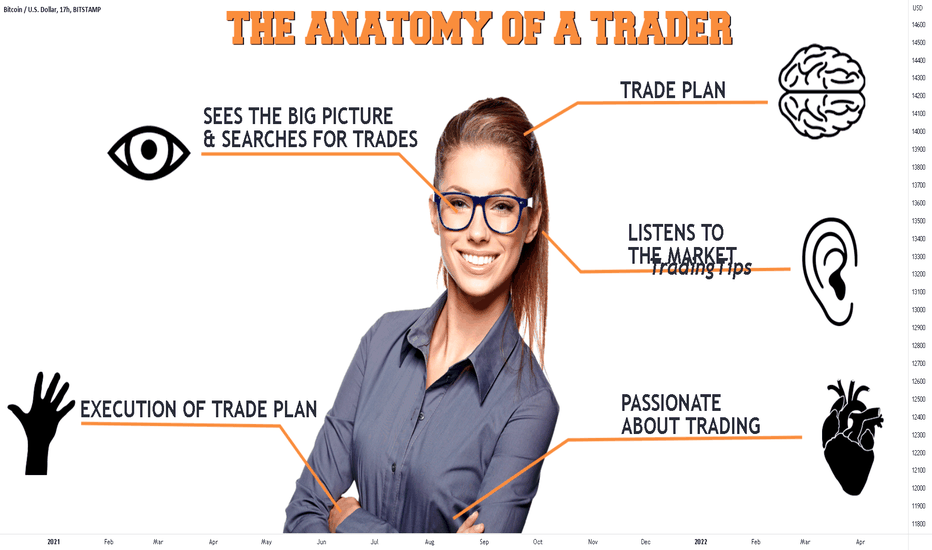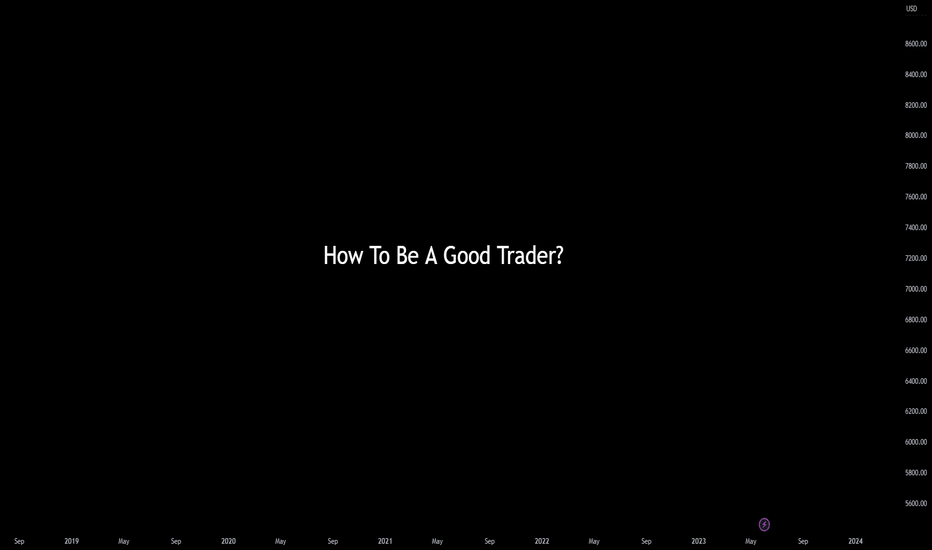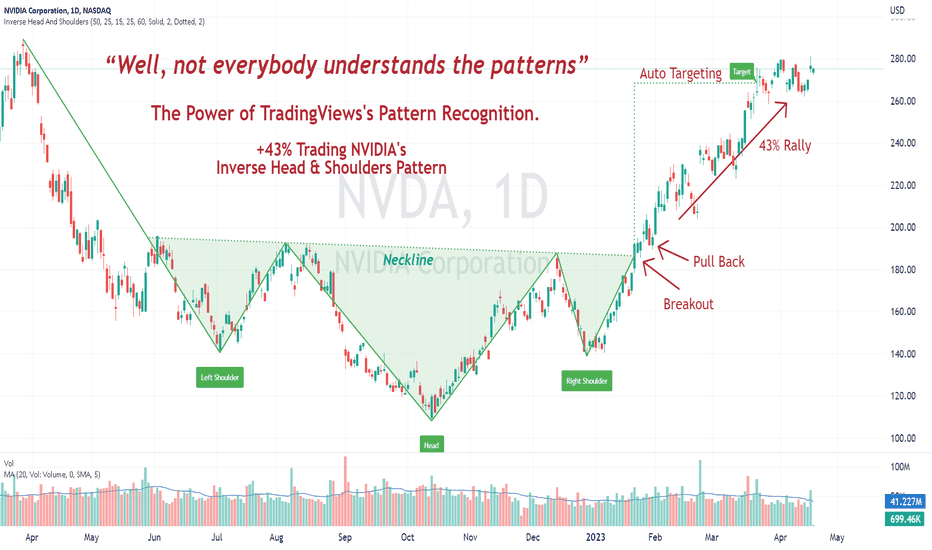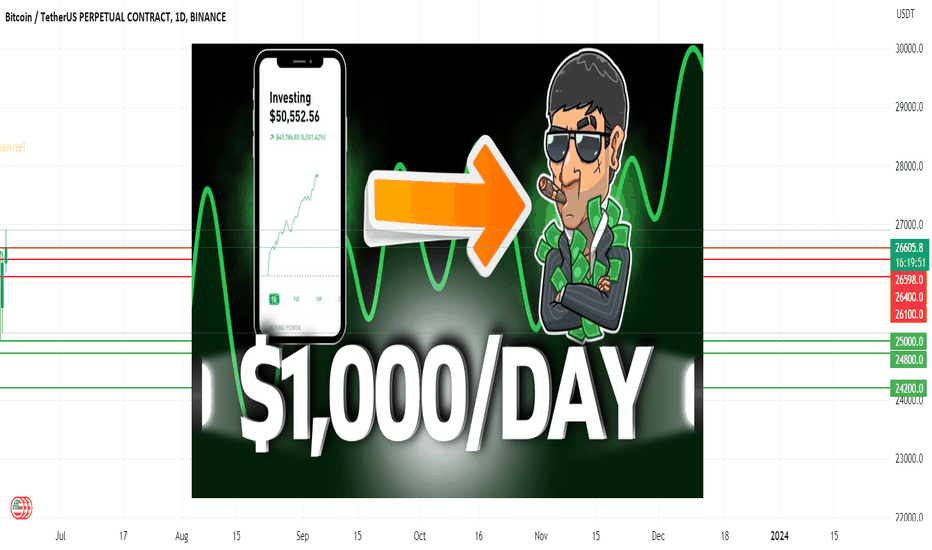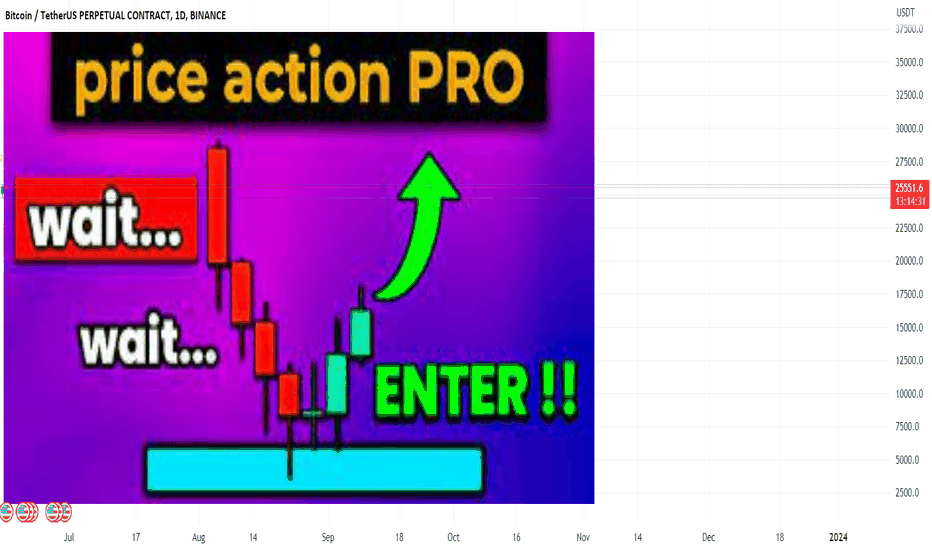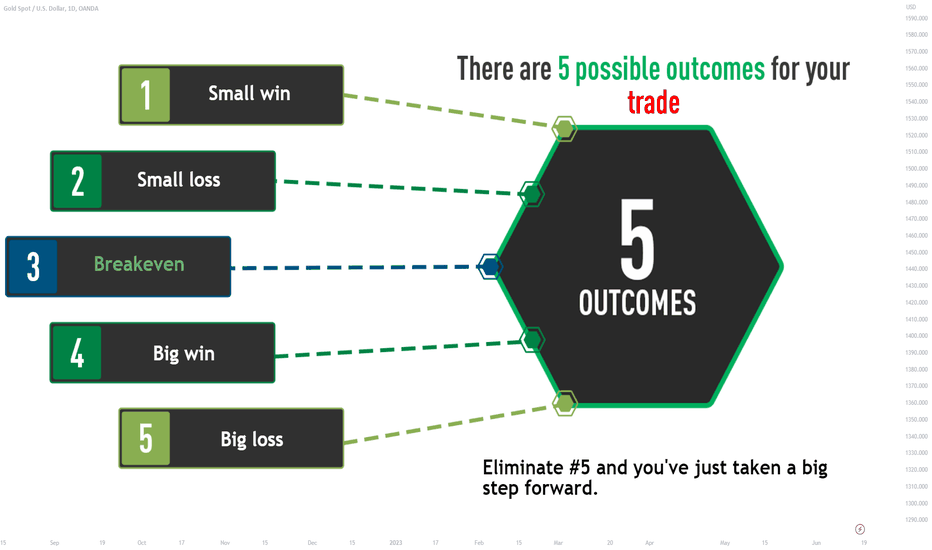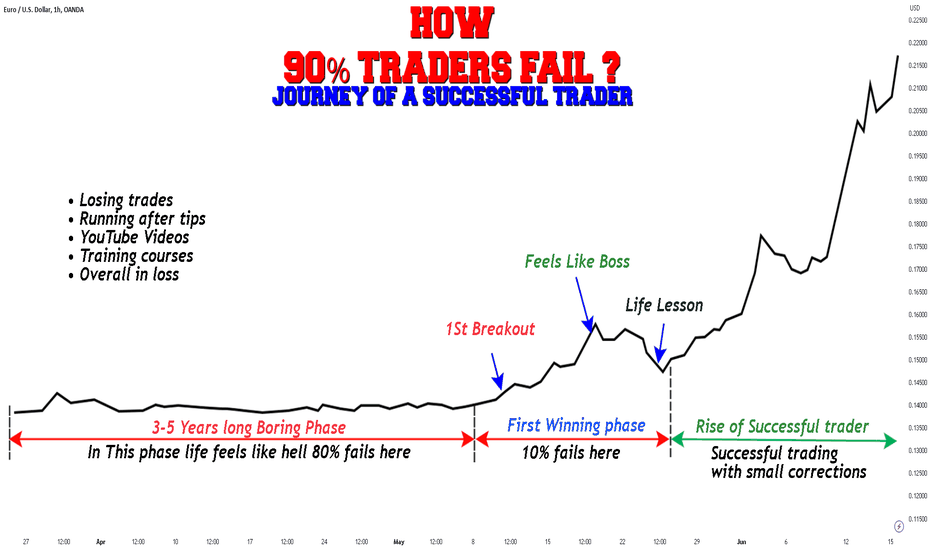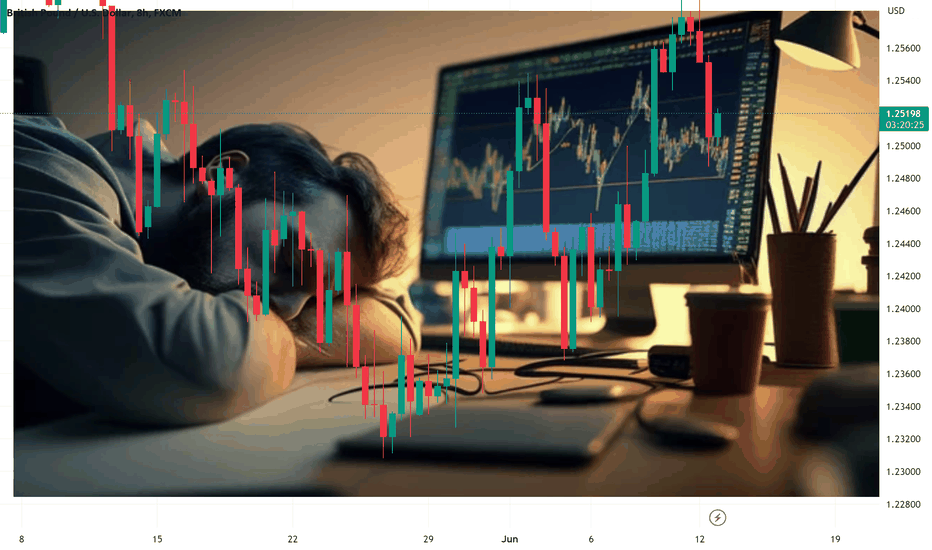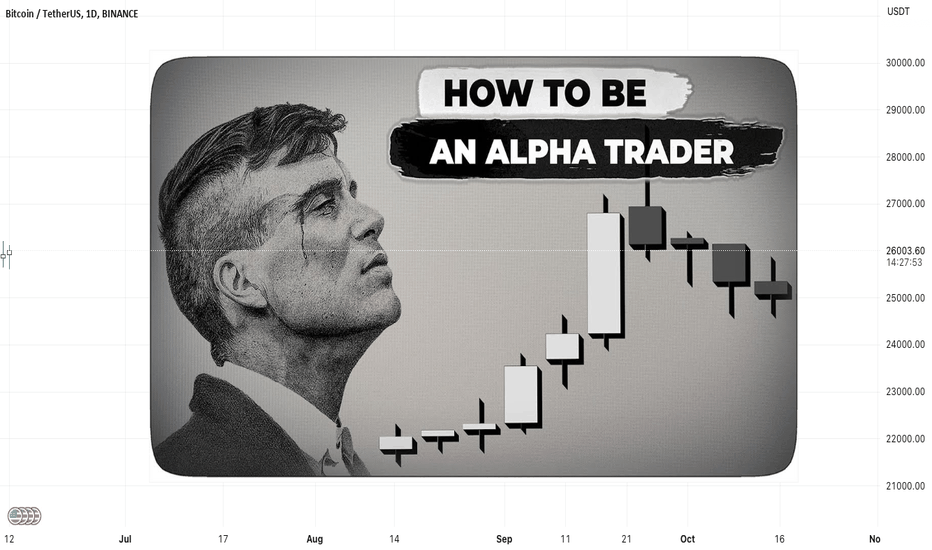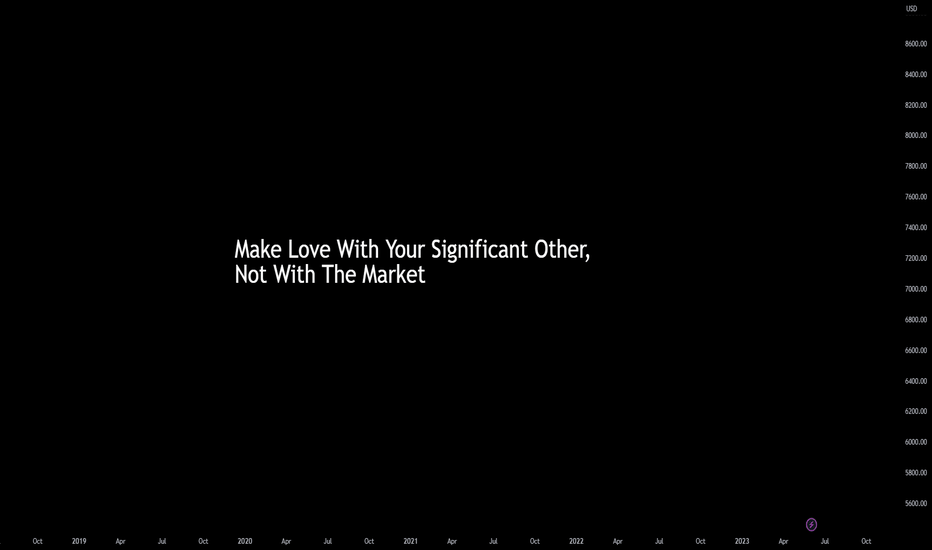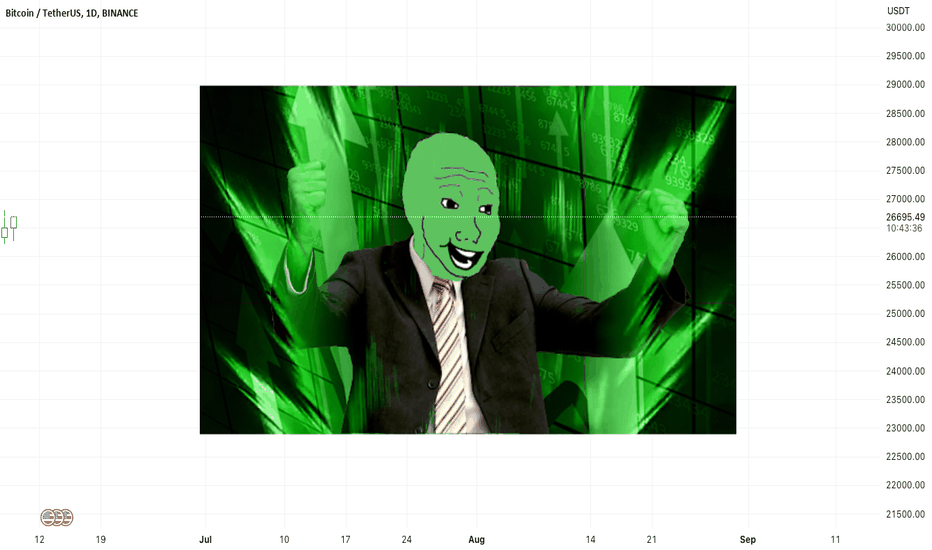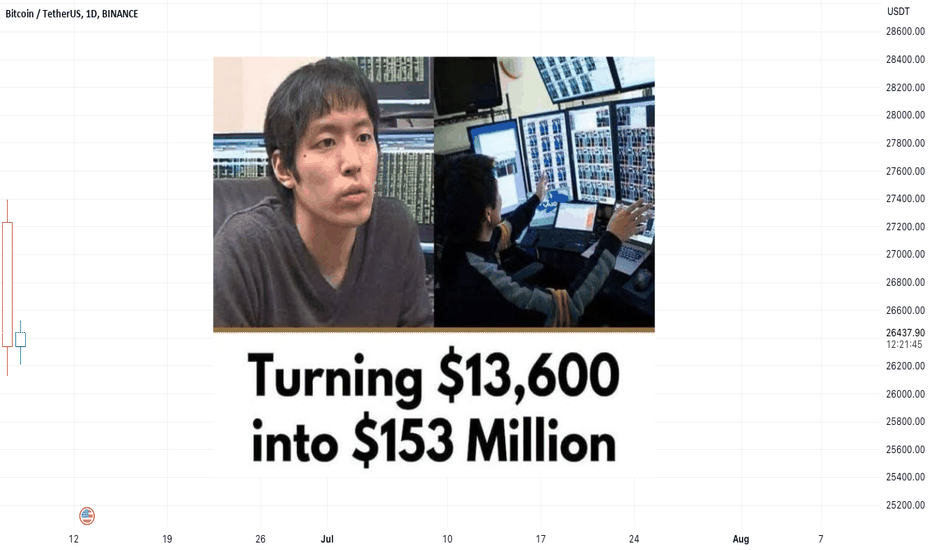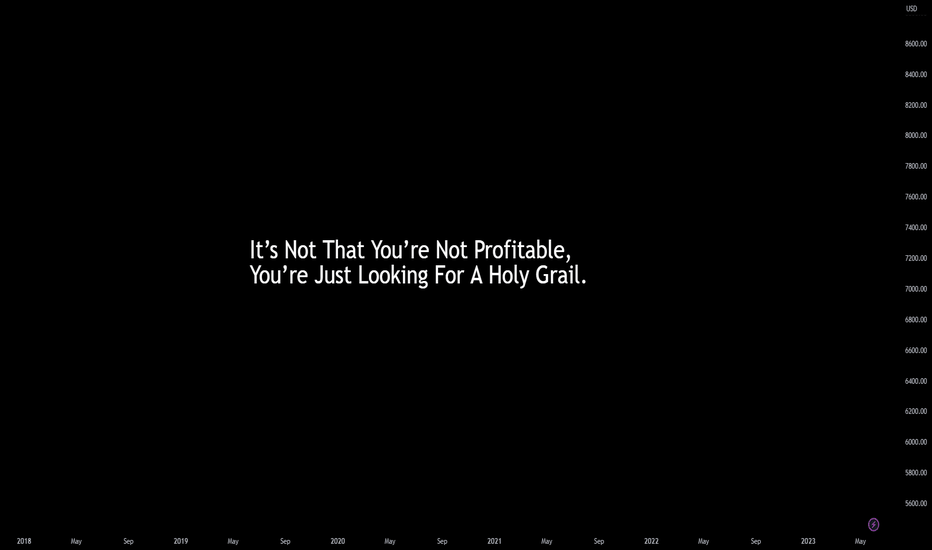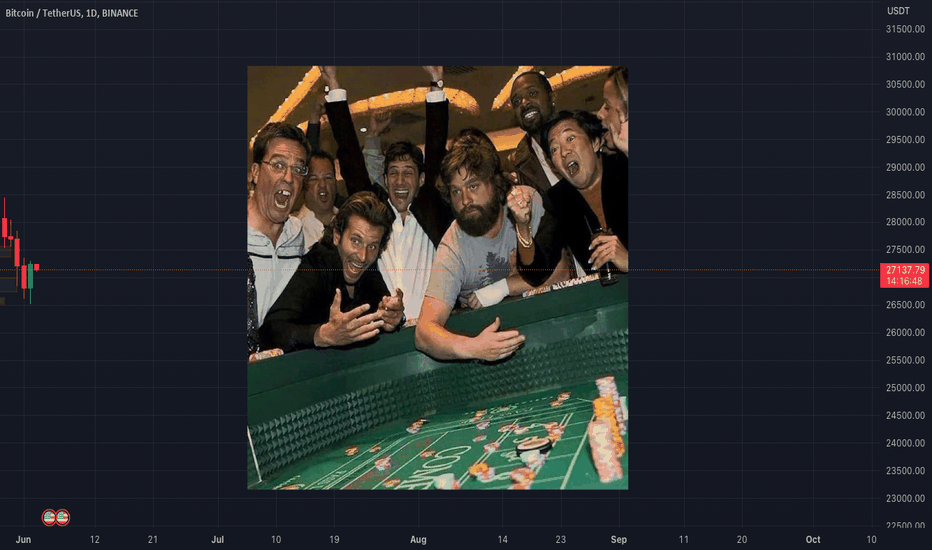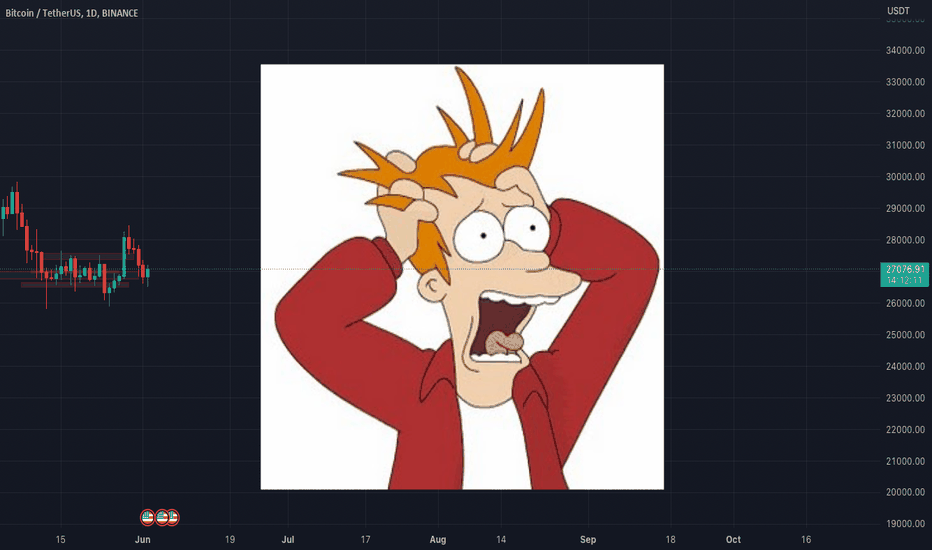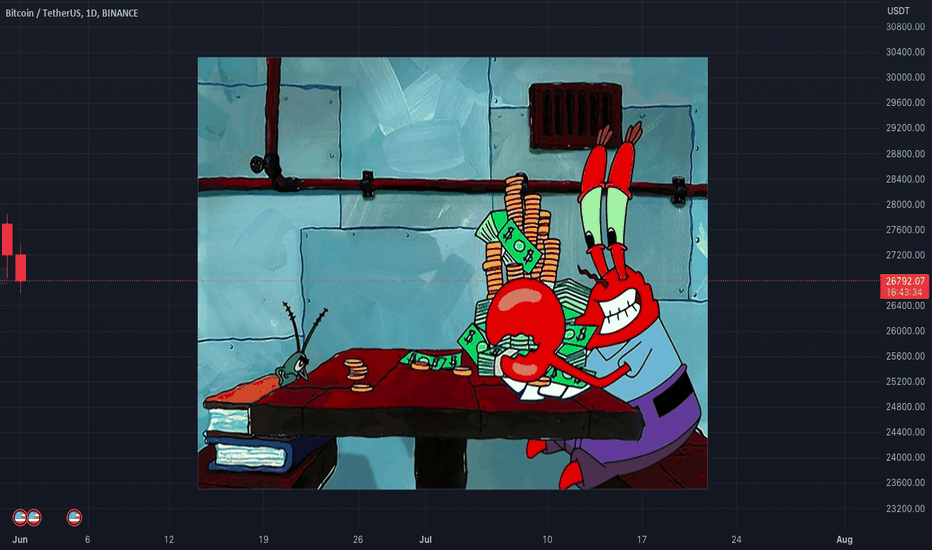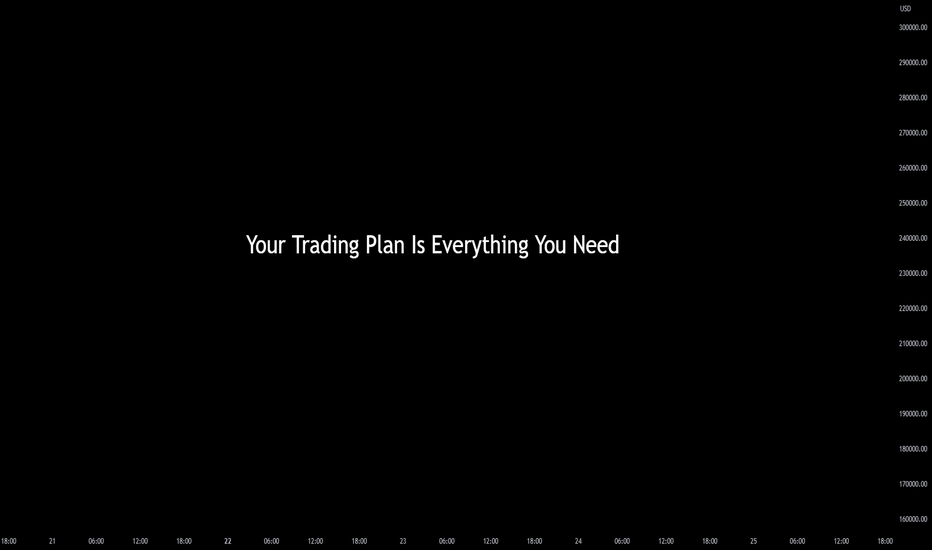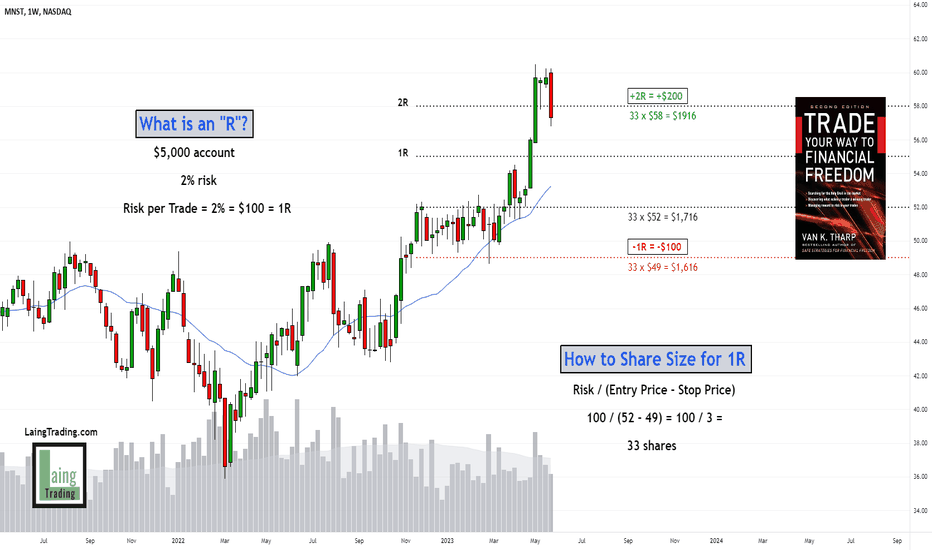Mastering Pro Forex and Gold Trading
As a professional forex and gold trader, it's essential to understand the anatomy of successful trading. From market analysis to risk management, there are specific body parts, or components, that make up a successful trader. Here's a breakdown of each component and its role in pro trading.
👁 Eyes - Market Analysis
Successful traders know that the markets are dynamic, and they must keep a keen eye on market trends and data. By scanning the markets, using technical analysis, and fundamentals-based analysis, traders can make informed trading decisions.
🧠 Brain - Discipline and Strategy
Traders must have the discipline to stick to their trading strategy and be ready to pivot when necessary. Having a clear trading plan and risk management strategy is essential, and traders must keep a cool head in the face of market volatility.
❤️ Heart - Risk Management
In trading, you need to know when to hold 'em and when to fold 'em. Successful traders must have a heart for risk management and know how to manage their trading capital effectively.
🙌 Hands - Execution
To execute good trades, you must have nimble hands that can take swift action when the opportunity presents itself. Traders must know how to enter and exit trades quickly and efficiently to maximize profits and minimize losses.
👂 Ears - Listening to the Market
Experienced traders know that the market can be unpredictable, so it's essential to actively listen and take in information from various sources to stay on top of trends and changes in market sentiment.
🦵 Feet - Adaptability
Successful traders must be able to pivot and adapt to sudden changes in the markets. Whether it's political unrest, natural disasters, or unexpected market moves, traders must be able to react quickly and adjust their trading strategy accordingly.
👄 Mouth - Community and Networking
Experienced traders know that trading is not a solitary endeavor and that community and networking are essential to successful trading. Sharing knowledge, joining trading communities, and networking with fellow traders can provide valuable insights and support when trading.
By understanding the anatomy of pro forex and gold trading, traders can develop the mindset and skills necessary to succeed in trading. From market analysis to risk management, each component plays a critical role in successful trading. Physical attributes like hands and feet can be developed with practice, but the heart and the brain are equally important, and they require discipline, strategy, and adaptability to thrive in the ever-changing world of trading.
Please, like this post and subscribe to our tradingview page!👍
Risk Management
[Education] How To Be A Good Trader?This might surprise you. I was actually a content creator on Youtube and blogs before I focus on trading. Trading was something I do on the side as I was trying to achieve consistency.
From young I already knew that I do not want to work in a 9 - 5 until I retire. I want to enjoy my life without worrying for money. I read a lot of books on personal finance, personal development and productivity.
To be good at something, you need at least the knowledge of a given topic. Knowledge is potential power. Action is power.
Stability Reduces Stress
I was lucky to have an actual framework and knowledge on how to keep and grow my money. I didn’t have to worry about money as I was spending way below my means, without sacrificing my hobbies.
It is important to have a stable income. I do not need to worry about being unable to pay bills, or to put food on the table.
This brings me to the next point. Since I have met my survival needs, I can spend more time and energy focusing on trading.
I have the savings and money to deploy in the financial market.
Building The Luxurious Lifestyle
Beginners are caught up with the idea that it is easy to get high win rate and high RR trades.
You want to learn how to trade because it’s lucrative. I don’t deny that. This business is very scalable. A 5% gain on a $100 account is $5, but a 5% gain on a $100,000 is $5,000. You take the same trade on different accounts, the profit can vary.
You want to enjoy life. You want to escape the 9 - 5 rat race. You want to provide for your family. You want to make your parents proud. You want to be a rich and successful person. Who doesn’t want that?
You can see many screenshots of people earning millions of dollar. They took high 100 RR trades and profiting tens of thousands of dollars per trade. These give the impression to beginners that they can do it too.
You enter the trading world with the wrong mindset. You want to earn thousands of dollars every week. But your capital is only $100. You think you can flip this account into tens of thousands of account. But you only get to see your accounts wiped out time and time again.
You don’t believe that you are not able to profit from the market. You talk to people who post screenshots of their profits and high RR trades.
You subscribe to their trade signals, account management, and expert advisors. You bought their trading course on demand and supply. Some mentorships tell you to put 3 technical indicators and follow the buy and sell signals. You put in more money since they are the ‘experts’. You might find small success here and there. But eventually, you are back to square one. Your account got wiped again.
You will never improve if you’re stuck in this loop. Trust me, you will NOT succeed.
Breaking The Loop
Solving this will ensure you will survive. You will meet your basic needs. You don’t need to worry about food, water and shelter. You won’t need to stress about not having enough to get by. You won’t need to worry about getting your electricity and water cut off. You won’t need to worry about your landlord coming after for rent. You’re not afraid of getting sick and being not able to afford basic healthcare.
You will get your life in order. You will get your personal finance in order. You know exactly how much your net worth is. You know how much your income a month is. You know how much your monthly expenditure is.
Once you know all these numbers, you are able to extrapolate how much you need at retirement. Knowing your net worth at retirement is crucial. I will write about how do you calculate for retirement in the future.
If you have all these figures worked out, you might not need to work so hard for the 100rr trading system. You can reach retirement earlier by investing your money into the S&P500. But the fact that you’re here, means you’re trying to aim higher isn’t it?
The point is that you have to understand your basic survival needs. If you are able to meet the basic needs through trading, you are a good trader. You don’t need to get 5 or 6 digits payout with constant 10% returns every month. All you need is a 2% gain on a $200,000 account which gives you a nice $4,000, trading from a beach villa at Maldives 1 hour a day.
Capital Issue
But Keeley, I need to have high RR trades and high returns a month to be able to trade full time. You’re right if you’re trading a small capital. If you only have $10,000, you will need 40% gain a month to get $4,000 of monthly income.
You can fix this with prop firms. With the rise if prop firms, it is easier to control large amount of capital.
If you’re consistent and profitable, it is not hard for you to pass prop firm challenges. To put into context, you only need 4% gain on a $100,000 account to achieve the same $4,000 you need.
What is a "good trader" to you? High RR? High profitability? High win rate? Able to quit your 9-5? There are many different definitions of good.
How good do you want to be?
To me, there's always room for improvement.
I do journaling to collect data.
Collect as many data points as you can. You can perform data analysis. Analyze them by session, day, time, duration, types of confirmation, month, pair. You know your max drawdown, unprofitable days, months, session, type of trade.
You know how your emotion plays a part in your trading results. Know your win probability, win rate, average RR, average stop loss size.
Being consistent and being able to profit from the market every week is good, at least to me.
What Is Learning?
I love the concept of trying new things. If you try, you will either succeed, or you learn. Think of what’s the worst that can happen to you. If you’re learning to be a trader, the worst that can happen to you is that you lose some money. It’s recommended that you start with paper money anyway. So the worst thing that can happen is that you lose a few days of your life. At least you can tell yourself that you’ve tried and it doesn’t work. You won’t have any regrets in the future.
Once you fail, you gain experience and knowledge. You can apply these skills to other areas in your life. In trading, you learn about risk management. You learn about the importance of being patient. All these skills compound. It’s not 1+1+1=3. It’s 1+1+1=5.
Now, what if you succeed? The upside is unlimited. You’re risking a few days of your life for a potential benefit that can change your whole life. You can be trading for a living, leaving the 9 - 5 life behind you.
All you got to do, is to try.
I failed a lot. I tried ecommerce, YouTube, private label drop shipping, affiliate marketing and more. All these taught me soft skills that are transferrable.
All these lead me to where I am today. A profitable trader with consistency.
Personal Finance Framework
A lot of people start trading live or forward testing. This is a wrong conception. You have to start with your personal finance.
Get your personal finance in order before looking for a side hustle. Yes trading for most people begins as a side hustle.
If you have bad debt, clear them first. Many of you have student loans or even consumer loans. Remember that these interests compound real quick if you don’t pay them off. Do not pay the least amount. Eliminate them completely, and fast.
Next, make sure you have consistent month cash flow coming in. This is to pay your bills and put food onto your table. This step will ensure your survivability.
Make sure you have savings. A rule of thumb is to have at least 6 months worth of expenditure saved up. You will need this money on rainy days. You can lose your job one fine day and will be glad to have this savings to buffer for the your next job. Medical bills can be huge. If you don’t have enough money, you might not get the medical attention you need. You might also need to resort to loans to pay off your medical bills. This brings me to the next point.
Insurance. If you’re young and healthy, get insurance. The premium tends to be cheaper when you’re young and healthy. The older you get, the more expensive the premium gets. It’s better to lock in the premium when you’re young as this will save you money in the long run. But you might be thinking, you’re young and healthy, you won’t fall sick. That’s what I thought so too, until I was diagnosed with pneumonia at the age of 25. I was working out 3 times a day and thought I was very healthy. Luckily for me, I had insurance which covered my medical bills.
There are also another school of thought. You might be thinking of skipping the insurance and investing the premium yourself. Now the risk here is that investing this amount of money does not guarantee a payout if you fall sick. Let’s say you’re 25 years old. Your insurance premium cost $1,000 a year and the coverage is $25,000. If you’re so unlucky to fall sick at year 2, you would have invested $2,000 in total into the stock market. Let’s say you’re a investing and trading genius and you manage to flip that $2,000 into $4,000. You're covered less than what the insurance will cover.
Insurance is as a hedge against big medical cost. It’s a balance between hedging and growing your net worth. It all depends on how you secure you want to be when the time you fall sick and you lose your employment income.
Achieve Consistency
Once you have your personal finance in order, you have already managed 70% of your survival needs.
It took me 5 years to achieve consistency. It can take you faster than 5 years. It will be hard for 1 or 2 years, but it will not stay tough forever.
Happy to say that I've made my second payout this month with a new Prop Firm.
My long-term holding portfolio is holding up great. This is due to good entries that I've made using technical analysis. Good technical analysis skills don't apply to Forex only.
I've always dreamed of and wondered how does it feel to receive big payments consistently. I'm not getting large payouts yet, but I'm already accumulating many prop firm accounts.
I focus on risk management, trade management, and trade psychology which I can control. By controlling what I can control, I am making my way to being a 7 figured funded trader.
Stay consistent. Stay safe. Success is just around the corner.
If you enjoy such content, feel free to click the like button and subscribe for more.
Let me know what are your thoughts and learning points in the comments below so others can learn from you too!
Please let me know what kind of topic you would like to read next :)
Happy weekend!
“Well, not everybody understands the patterns” Limitless 2011
In the movie Limitless (2011), Eddie Morra (Played by Bradley Cooper) takes a mysterious pill, NZT-48 , that turns him from a struggling writer to a financial wizard . The pill unleashes 100% of his cognitive power, transforming him into an intellectual powerhouse.
About 40 minutes in, there is a scene.
Hank: "Pattern recognition. That's your snake oil?"
Eddie: "Well, not everybody understands the patterns."
Why am I sharing this? Well, because not everybody understands the patterns, especially most traders.
Did you know that chart patterns actually work?
Not all patterns work, just some of them.
Although there are numerous patterns in technical analysis books, many of them are actually snake oil.
Take, for example, the Bull Flag; this is a Flag pattern occurring in an uptrend, usually during a bull market. The flag pattern is proven* to be snake oil; it is no more than a 50/50 chance of success.
Only one flag pattern works; it is called a high tight flag* and works 85% of the time.
The chart above (NVDA) is an example of one of the most accurate and successful patterns in technical analysis.
The Inverse Head and Shoulders.
The inverse head and shoulders is a well-known chart pattern. But how reliable is it?
Based on thousands of tested trades from 1996 to 2020, it has an 89% success rate and an average price increase of 45%.
Two decades of research* shows an inverse head and shoulders chart pattern has an 89% success rate for a reversal of an existing downtrend during a bull market.
When this pattern works, it averages a price increase of 45%; this is one of the most reliable chart patterns.
In fact, the NVIDIA chart above made 43% and has exceeded the target.
Trading is a Game of Probabilities
Trading is definitely a game of probability, but few traders understand the actual probability of each trade.
Now that you know the inverse head and shoulders is 89% successful with an average upside of 45%; you can assess your risk/reward and make better trades.
Sure, there is an 11% chance of failure and a lower-than-average price increase, but now you know the odds.
Take TradingView's NZT-48 Pill
In the movie Limitless, Eddie takes the NZT-48 pill and becomes a top trader.
But did you know that TradingView is like the NZT-48 pill?
How?
Because the inverse head and shoulders pattern in NVIDIA (chart above) was discovered and annotated with TradingView's pattern recognition algorithms .
TradingView does the hard work for you; it even sets the correct price target and lets you know when it is reached.
If you are trading and not using TradingView's in-built pattern recognition, you are not utilizing the NZT-48 superpower.
How to Turn On Pattern Recognition in TradingView
Click Indicators > Technicals > Patterns
Next, select the patterns you want.**
I hope this was useful; if you like, hit like. If you want more, hit follow.
Happy trading, traders!
*Source: The Encyclopedia of Chart Patterns (2021 Wiley) by Tom Bulkowski
**I would not recommend using the Pennant Patterns; they are proven not to work.
How To Make $100+ A Day! Winning Trader Strategy (A+ Setup)Greetings, my wonderful followers! 😇
Today, our focus will be on understanding the mindset of successful traders, exploring their thoughts and what sets them apart from those who struggle, based on their way of thinking.
We will examine a non-exhaustive list of insightful quotes that are worth knowing and remembering. I recommend keeping a notepad handy to jot down all the trading knowledge you've acquired over the years.
First and foremost, please remember to show your support by liking and following me for more engaging content. Let's get started! ✅
- Trade what you observe: It is crucial to approach trading without bias. Technical analysis provides insights into the potential direction of prices, enabling you to make informed decisions. Allowing biases to cloud your judgment will only lead to confusion and missed opportunities, possibly resulting in financial losses. When analyzing the market, leave your emotions behind.
- Plan your trades and follow your plan: It's as simple as it sounds. Create a trading plan and stick to it. Without a plan, you lack rules, and without rules, it's difficult to generate profits.
- Embrace the trend: Setups that align with the prevailing trend have a higher probability of success. Therefore, it's advisable to favor bullish setups in a bullish trend and bearish setups in a bearish trend. While trend reversal setups can be enticing, it's important to treat them as exceptions. During periods of quantitative easing or similar economic measures, it's best to follow the market movement rather than trying to time the top or bottom, as it requires a considerable amount of luck.
- Trading is 80% psychology and 20% technical analysis: This popular saying emphasizes the significance of psychology in trading. Successful traders possess strong psychological rules and a resilient mindset. They respect these rules, which instill confidence and tranquility. By adhering to their rules, they feel secure in their work, knowing that the odds are in their favor.
- Buy low and sell high: "Buy low, sell high" is a strategy where you purchase stocks or securities at a low price and sell them at a higher price. However, this strategy can be challenging, as prices are influenced by emotions and psychology, making them difficult to predict. Traders employ various tactics, such as moving averages, analyzing the business cycle, and assessing consumer sentiment, to determine optimal entry and exit points.
- Cut your losses, let profits run: This saying encourages traders to exit losing positions promptly while allowing profitable trades to continue. Assuming the trader follows a sound trading strategy that consistently yields positive results, following this rule allows profits to accumulate over time while minimizing losses. Consequently, it enhances the overall trading experience.
- Patience is crucial: One of the cardinal rules in day trading is to exercise patience. Throughout the day, numerous opportunities may arise. However, it's important to wait for the right opportunity that aligns with your specific rules and trading plan. Sometimes, refraining from making any trades at all requires immense patience. With patience and vigilance, most trades will be profitable.
- Establishing good trading habits, having a well-defined trading plan, and following sound trading rules are self-explanatory. These three components form the foundation for successful trading.
- Set and forget: This approach involves opening a position with predetermined stop-loss, take-profit, and entry levels. Once the trade is activated, you let it run without any further management. Whether the trade ends in a profit or loss, you allow the price to fluctuate according to the predefined parameters, minimizing the need for constant interaction.
- Trading is a game of probabilities: Successful traders thoroughly understand the probabilities associated with each trade. They skillfully utilize this knowledge to increase their chances of achieving long-term success.
Remember to show your support by liking and following me for more valuable content. That's all for now. Wishing you the best, and may you have a fantastic weekend!
Trading SECRET: How to Enter & Exit like a ProOver the past five years of trading, I have recognized the importance of continuously critiquing myself and my trading strategy. I diligently monitor my performance on a daily, weekly, monthly, quarterly, and yearly basis. Here's a concise list of the rules I have followed prior to entering and exiting a trade:
✅ Entry Rules
Ensuring that the stop loss is positioned beyond the strongest support or resistance line.
Staying disciplined and adhering to my trading rules.
Assessing the risk/reward ratio and confirming its acceptability.
Double-check my entry, stop loss, and target position for accuracy.
Considering any potential news announcements that could impact the trade.
Evaluating the bid/ask spread to ensure it falls within the normal range for the specific currency pair, trading session, and time.
Verifying that I am not risking more than my agreed-upon 1%.
Taking into account correlation and avoiding trades that contradict my existing open positions.
Confirming that the market exhibits sufficient volume and liquidity.
✅ Exit Rules
Evaluating if the market has behaved as predicted and staying on track accordingly.
Assessing if the trade has reached a support or resistance line.
Reviewing whether the stop loss has been placed too far away or too close.
Considering if I am exiting the trade prematurely.
If unsure about the trade, exiting immediately.
Exiting immediately if I acted impatiently and entered the trade prematurely.
Identifying any upcoming news events that could impact the trade.
Observing if the trade is changing directions.
Reminding myself not to take profits too early, avoiding exiting before reaching the target line.
👉 I often receive inquiries about trading entries. Therefore, I'm sharing a few entry strategies that you can incorporate into your own trading:
Range Fade: This strategy involves buying at the range bottoms and selling at the range tops. The risk-reward ratio may not be ideal for many traders, given that the range is usually small. However, by placing the stop loss a few percentage points beyond the range, you can maximize the ratio.
Reversal: This entry approach involves entering at the most recent extreme or key level. While this method is quite popular, it often goes against my first rule: "never fight the trend, he's your friend." However, I do consider multi-day/week key levels in my ideas.
Breakout: This strategy involves entering a trade as the price breaks out of a range or pattern. It is a reliable option, especially for beginners who are keen on identifying repetitive patterns in the market. For example, you can sell at the neckline of a head and shoulders pattern and profit from it. However, it's important to note that the more complex patterns you observe, the fewer people are likely to use them, which may reduce their significance.
Pullback: This entry approach involves entering a trade after a minor reversal or retest. Statistically speaking, this is one of the most frequently used entries in my trading. It is a simple method that allows you to follow the trend. Identify key points, consider Fibonacci levels, and ensure it's not a complete trend reversal. Although you may miss out on a few percentage points of profit using this approach, it can positively impact your long-term profitability.
THANK YOU, MY LOVELY FOLLOWERS, FOR TAKING THE TIME TO READ. ❤️
5 Potential Outcomes of Trading Gold or Forex
Trading gold or forex can potentially lead to various outcomes, both positive and negative. Here are five potential outcomes to consider:
1. Profitable Outcome: Trading in gold or forex can result in profits, which is the ultimate goal of any trader. A trader can make gains if the asset’s value increases, and they sell the asset at a higher price than their entry price.
2. Loss: Trading involves risk, and traders can lose money due to a decline in asset value. Traders should use stop-loss orders to minimize their losses if prices move against their positions.
3. Break-Even: In some cases, the market price may not move in favor of traders or against them. In this case, the trader could exit the trade without making any profits or losses.
4. Margin Call: Trading on margin means borrowing money from the broker to execute trades. If traders use too much leverage and losses exceed their account balance, they get a margin call. This means that the broker will close their position automatically, resulting in a loss.
5. Hold Position: Traders can hold an open position for a long time to wait for the market to move favorably, also known as long-term trading.
In conclusion, trading in gold or forex can result in profits, losses, break-even, margin calls, and long-term trading. Traders should consider all of these potential outcomes before opening a trade and implement risk management strategies to minimize losses.
Hey traders, let me know what subject do you want to dive in in the next post?
This Breakout Trading Strategy will create MILLIONAIRES...Attention, traders,
Breakout trading stands as one of the most widely used trading strategies, offering a seemingly simple concept that becomes intricate and convoluted in practice. In this article, we will explore seven essential steps that every breakout trader should adhere to.
📚To provide a brief overview of breakout trading, this approach revolves around identifying significant levels such as horizontal support/resistance or trend lines, anticipating their potential breakthrough, and capitalizing on the resulting substantial market movement.
1️⃣Without surprise, the first responsibility of a breakout trader involves identifying key levels, preferably on weekly or daily timeframes.
2️⃣Once these key levels have been recognized, a breakout trader must exercise patience and await the confirmation of a breakout. This is where many traders stumble. The challenge lies in having clear and dependable rules to validate a confirmed breakout.
I personally employ the following rule: a breakout will be deemed confirmed when the candle closes above/below the structure on the highest timeframe where the structure is identifiable.
3️⃣After confirming the breakout, the subsequent step entails waiting for a retest of the broken level. Retesting is crucial as it provides a more favorable risk-to-reward ratio for the trade. While there is no guarantee that the price will retest the broken level, resulting in missed trading opportunities, retest trading generally yields higher gains in the long run.
4️⃣When initiating a trade on a retest, it is imperative to establish precise target levels—levels at which profits will be taken. Novice traders often make numerous errors at this stage. Remember that your targets should be realistic and based on the nearest strong structure levels rather than your desired returns.
5️⃣Additionally, a breakout trader must set a stop loss—a level of protection set below/above a previous minor structure to safeguard against stop-hunting. The stop loss represents the point at which the trader's predictions are proven incorrect and renders the trading setup invalid.
6️⃣Once a trading position has been opened and stop loss and take profit levels are set, patience becomes paramount. There is no guarantee that the price will experience a sharp rise or fall immediately after the breakout. The market may coil and consolidate for an extended period before exhibiting significant movement. A breakout trader must exercise patience and refrain from allowing emotions to interfere.
7️⃣Finally, it is crucial to remember that exit points are determined by stop loss and take profit levels. Adjusting the stop loss in the event of a drawdown, prematurely taking profits, or extending targets can be detrimental to your trading. Remain disciplined, avoid greed, and keep emotions in check.
Naturally, this seven-step trading plan alone is not sufficient for profitable breakout trading. Each step of the plan requires careful consideration of various nuances. Nevertheless, let this plan serve as your initial guideline: learn and adhere to it, while continuously refining its rules over time until you become a consistently profitable trader.
Are you engaged in breakout trading?
❤️Please show your support for this idea with likes and comments!❤️
Why 90% Of Traders FAIL⁉️
Trading is one of the most fascinating and exciting professions in the world. It promises huge profits, financial independence, and the ability to work from anywhere. But with great rewards come great risks, and 90% of traders fail.
Why do so many traders fail? Let's explore the reasons.
📚Lack of education: Many traders jump into trading without the proper education or training. They don't understand the market dynamics, technical analysis, and risk management. Trading is a skill that needs to be learned and practiced over time. Without education, traders are like blind people trying to navigate through a maze.
💔Emotional trading: Emotions are the biggest enemy of traders. Fear, greed, and hope can cloud judgment and lead to poor decision-making. Successful trading requires discipline and emotional control. Traders must learn to keep their emotions in check and stick to their trading plans.
📉Overtrading: Many traders believe that more trades translate into more profits. However, overtrading can lead to burnout, stress, and losses. Traders must focus on quality trades, not quantity.
🆘Lack of risk management: Trading involves risk, and traders must learn to manage it. Risk management includes setting stop-loss orders, using proper position sizing, and diversification. Traders who don't manage risks can quickly wipe out their accounts.
❌Unrealistic expectations: Trading is not a get-rich-quick scheme. It requires patience, persistence, and hard work. Many traders have unrealistic expectations about their profits and timelines. They give up too soon or take too much risk in search of quick profits.
So, what can traders do to avoid failure?
✅Firstly, educate themselves. Learn the fundamentals of trading, technical analysis, and risk management. Investors can take various online courses for trading like those from Udacity, the Trading Academy, etc.
✅Secondly, manage emotions and develop discipline. Learn how to control your emotions and stick to your trading plan.
Traders must treat trading as a business and follow strict rules like any other business.
✅Thirdly, trade with proper risk management. Develop a risk management strategy before starting trading. Use stop-loss orders, never risk more than you can afford to lose, and diversify your portfolio.
🧠In conclusion, trading can be a rewarding profession that offers many benefits. However, traders must be aware of the risks and pitfalls. By educating themselves, managing emotions, and developing robust risk management strategies traders get a good chance of succeeding in trading. Good luck!
😸Thank you for reading buddy, hope you learned something new today😸
Do you like this post? Do you want more articles like that?
The AEM Framework: 3-Step Guide to Successful TradingToday, I'd like to introduce you to the 'AEM' framework – a three-step process to successful trading. This framework is designed for everyone, from beginners starting their journey to seasoned professionals looking to refine their strategies. It involves three fundamental steps: Analyze, Execute, and Manage. Let's break down each element:
🔍 'A' for Analyze
The first step to becoming a successful trader is to understand yourself and find a trading style that suits your personality, risk tolerance, and financial goals. This includes your emotional comfort with taking risks, your patience levels, and your time commitment to trading.
Once you've figured out your trading style, the next step is to analyze potential strategies. Whether you're inclined towards fundamental analysis, technical analysis, or a combination of both, you must thoroughly understand the strategies you want to apply.
Finally, analyze your chosen strategies and yourself to create a robust trading plan. Your trading plan should include what you'll trade, when you'll enter and exit trades, and your criteria for decision-making. Remember, the goal isn't to make perfect predictions but to follow a consistent plan that can potentially yield positive results over the long term.
🎯 'E' for Execute
The second phase is execution. You've made your plan, and now it's time to put it into action. Execute your trades according to your strategy, without letting emotions cloud your judgement. Remember, it's about sticking to your plan – not chasing profits or running from losses.
But executing your plan isn't just about trading. It's about discipline and consistency, regularly reviewing your trading activity, making adjustments as necessary, and continuously learning from your experiences.
📊 'M' for Manage
The final step in the AEM framework involves managing several aspects of your trading:
Manage Yourself: Trading can be emotionally taxing. Maintain your physical and mental health to ensure you're always in the best shape to make rational decisions.
Manage Your Risk: No strategy is bulletproof. Always use stop losses, position sizing, and diversification to manage your risk effectively.
Manage Your Trades: Monitor your trades, keep records, and review them periodically to identify patterns, learn from your mistakes, and improve your strategy.
Manage Your Money: Keep your capital safe. Never risk more than a small percentage of your trading capital on any single trade, and be sure to keep some funds in reserve for unexpected opportunities or setbacks.
The AEM approach is a comprehensive method that can assist you at all levels in creating, executing, and managing a successful trading plan. It encourages introspection, disciplined execution, and careful management. Remember, the journey to trading success isn't always smooth, but the right approach and mindset can make it considerably more navigable.
How to become an ALPHA TraderMastering the Path to Becoming an Alpha Trader: Essential Principles for Success
Exercise Discipline: Avoid Overtrading
Maintaining discipline is crucial in the fast-paced world of trading. Resist the temptation to trade excessively, as quality always trumps quantity. Remember, patience is a virtue, and waiting for high-quality setups will yield better results.
Seize Opportunities: Avoid Under-trading
Recognize valuable trade setups and have the confidence to take action. Don't let hesitation or fear hold you back from executing on well-analyzed opportunities. Trust your instincts and capitalize on favorable market conditions.
Manage Risk: Take Control of Your Losses
While profit is enticing, effective risk management is the cornerstone of successful trading. Acknowledge the potential for losses and implement risk control measures to safeguard your capital. Limiting losses is just as important as maximizing profits.
Streamline Your Approach: Simplify Your Strategy
Amidst the sea of information available, it's easy to drown in complexity. Streamline your trading approach by focusing on a few proven strategies and indicators that resonate with you. Simplifying your strategy will enhance clarity and decision-making.
Trade with Precision: Embrace Robotic Execution
Emotions have no place in trading. Develop a systematic approach that removes emotional biases from your decision-making process. Execute trades based on predefined rules, allowing you to act with discipline and consistency.
Reflect and Evolve: Learn Your Strengths and Weaknesses
Successful traders are self-aware and continuously strive for self-improvement. Analyze your trading behaviors, strengths, and weaknesses. Leverage your strengths and work on overcoming your weaknesses to evolve as a trader.
Amplify Success: Double Down on High-Yield Trades
Identify trading activities that consistently yield favorable results. Once you recognize your areas of strength, allocate more resources and focus on maximizing returns in those specific areas. Amplify your success by capitalizing on what works best for you.
Embrace the Basics: Don't Fear Going Back to Square One
If you find yourself in a rut or facing challenges, don't hesitate to revisit the fundamental aspects of trading. Revisit the basics, reinforce your knowledge, and reaffirm your understanding of core trading principles. Building a strong foundation is key to long-term success.
Remember, adopting these essential principles and incorporating them into your trading routine can significantly enhance your journey to becoming an alpha trader. Engage with the content, share your own best trading tips, and show your support through likes and comments. Stay committed, keep learning, and look forward to more valuable insights.
Thank you for your continued readership, and we'll see you in the next installment! ❤️
[Education]Don't Make Love With The MarketTrade what you see, not what you feel.
Human are emotional creatures.
Believe it or not, I had attitude problems in the past. I get angry easily and this is a bad trait to be a trader.
In the beginning when I was still a noob, I would fund a live account without learning how to trade properly. I buy and sell base off moving average, RSI, MACD, and signals.
You guessed it, I burst plenty of accounts. Even if I win some trades, I would lose many more next. Whenever I lose a trade, I will feel angry. When I feel angry, can you guess what I do next? I revenge trade.
I don't believe that gold will not go higher. Let me take another long position.
Wait what the.. my trade got taken out again?
I think this is a stop hunt. Last try. This time the price will sure go higher.
"Opens another long position with larger lot size".
And you guessed it. I wiped out my account trying to catch a falling knife.
Ditch Your Emotions
Keep your feelings and emotions and aside when trading. The market doesn't care if you're happy or sad today. It will do what it wants to do. You can't control how the price move. Neither do I. Unless you have in control billions of dollars. If you do, why are you even reading this?
The problem is not with the market nor your trading strategy. The problem lies in YOU. You are the common factor here. All strategies can be profitable with the right execution, trade and risk management. But why can someone else be profitable but not you? It seems like everything is profitable until you put your own money in isn't it?
When you allow your emotions to take over, you won't be rationale. You will take actions based off your emotions.
If you feel doubt, you will look for confirmation not to take a trade.
If you feel angry, you will take revenge trades.
If you feel happy, you will feel like you won't lose your next trade and get complacent.
If you feel overconfident, you will risk more on your next trade.
If you feel fear, you will close your trade early for small profits.
If you feel tired, why the heck are you still on the chart?
Feelings are subjective and the market has no interest in it.
The Downward Spiral
Trading based off feeling is like gambling. Gambling belongs in a casino, not the financial market.
Let's say, you feel like the market is heading towards a recession. Would you blindly short the market if the price did not give you any confirmation?
This is the problem with you. You let emotions take over your decision making skills. This is why you cannot achieve profitability.
You might be in a trade, price goes against you and you’re in drawdown. You fear that the price will take you out. You cut your trade. Price reverse and hit your profit target.
You could have won the trade by following your plan, but you let your emotions take control of your decision.
When this happens too many times, your profitability decrease significantly. This makes a profitable strategy becomes unprofitable because your trade management sucks.
Not only will you lose money trading like this, but also precious time. How long did it take you to backtest that trading system? 1 day? 1 week?
How many times are you going to repeat this and waste even more time? Even if I give you the holy grail trading strategy, you will still not achieve profitability. It's not the system. It's you.
You will NOT achieve success in trading if you cannot master your emotions. Say goodbye to your financial freedom and a life of enjoyment. The only thing you can enjoy is the occasional small wins that you cut before the trade becomes a runner. You will still be unprofitable.
Follow Your Plan
If I have to summarize how I became profitable, it will be to follow your plan.
Trade what you see because only you know your own analysis. You've backtest enough to see how your edge will play out over a large number of trades. Do not let other people’s analysis interfere with your trades. They could be looking at the 1 minute timeframe, but you're trading on the 15 minute timeframe.
Price is fractal. If price is bullish on the 1 minute, it can be bearish on the 15 minute. Why do you want a second opinion on your trade?
When price shows you what it’s doing, react to it. Do not anticipate what the price will do and assume that price will do exactly that.
But Keeley, it’s so boring to wait for price to come back to my entry. I might miss the trade. I will take a short here because I’m expecting price to go lower and tap into my long order. People want to be in the action.
How many times do you expect price to make a bearish retracement and tap you into your long position? How many times did you actually open a short position and expect your long to get tapped in?
If price did not give you any confirmation, don't take the trade. The market will do what it wants to do. You can't expect the market to do exactly what you anticipate it to do.
Experience
When I was scalping on the seconds chart, I was loving every moment of it. I was constantly in a trade, catching all the movements. If I lose, it’s fine. I would always think that I have more opportunities coming soon. I would expect price to do what’s playing out in my mind.
This was not sustainable as I was taking too many trades within a short period of time. Even on a tight spread account, spread on lower timeframe accounts for a chunk of my risk management. Your trading psychology should be strong when scalping on the lower timeframe. Scalping a few pips per trade is doable but it's stressful.
I thought my trading psychology was good, until I experienced a losing streak. The more losses I experienced during the day, my psychology got affected more. This goes the same for losses in the same trading session. I’d do stupid things like risking more than normal, taking trades that I don’t usually take. I also take trades without confirmation. I used my feelings to trade as I expected price to play out what I wanted. Eventually, the win’s going to come right? This happened for a few weeks and I burst quite a few challenges. I lose quite a lot of motivation and called quits.
I’m quite a lazy person. I do not like to sit in front of my laptop stalking TSXV:SPDR S&P 500 ETF Trust(SPY)$ , $Tesla Motors(TSLA)$ or $Apple(AAPL)$ and trade for a few hours straight. I took a few weeks off from charts and reflected. I look deep into myself for answers.
I got the answers. I will try to be sufficient just by trading the higher timeframe. This way, I do not need to sit in front of my laptop for a few hours. I have the freedom to do what I like without sticking to my charts. This sits well with me too as this trading style fits my lifestyle. This way, I can avoid overtrading. I can easily see what I trade because each candle took 15 minutes to be completed. This kept my trading psychology at tip top condition.
Framework
PBJ Framework
No this is not peanut butter and jelly. Let's breakdown the following:
Plan : Know what to look out for. Know what to do before, during and after trading. Before entering a trade, know how much you’re risking. Know your entry signal, confirmation, and stop loss placement. Do you take partial profits? If yes, where will you take the profits? How much position will you take at each partial profit targets? If the price did not meet any of the condition, DO NOT take a trade.
Be in the moment : During the trade, know how you’re going to manage your trade. Do you shift your stop loss to breakeven? Do you take partial profits? Do you scale into your trade? Check your emotions. Are you feeling anxious? Angry? Confident? Tired? Excited? Your emotions have no say when you're trading.
Journal : After closing the trade, journal your trade. Write down how you feel before, during and after the trade. Write down how did you manage the trade. Give it a score from 1 - 5. This will help you in the future when you’re reviewing your trades.
When you have 100 trades recorded, you can finally do your analysis. Look at the times when you trade based on feeling. How do they play out? Are those trades profitable? Look for the common factor on all your winners and losers. The more information you record on your journal, the more analysis you can perform.
Achieving Profitability
Using the PBJ Framework, I see great improvement in my trading skills. I started to be more present and conscious of what I'm feeling.
I recorded almost everything. From my pre-trading ritual to post-trading ritual, I have all the data I need. I know how my emotions change throughout the trading session.
I know how often my edge will play out.
I know which days are profitable.
I know which trading sessions are profitable.
I know which months are profitable.
I know which are my most profitable pairs.
I find peace with losing. Why? I have all the data. I have evidence that my edge will be profitable if I take all the trades that appears in front of me.
I avoided trading on days and session where I have the least profitability. Not only did this increased my win ratio, but profitability too.
I was once unprofitable. Since then, I found consistency and manage to get funded with FTMO and The Funded Trader.
My first payout was small. It's only USD$200 on a $10,000 account. Even so, this is one big step ahead in my milestone. I was targeting one payout for 2023 and I've achieved this target in May. I got my second payout in June. My goal was to get $50,000 funding by end of this year, but I've already achieved it in May. I've now stretched my goal to $200,000 funded by end of this year.
The Ordinary Life
Life always begins with one step outside of your comfort zone. - Shannon L. Alder
To create an extraordinary life, take full responsibility for your actions and decisions. Stop blaming external factors, and focus on the things you can control. Take full responsibility of your trades, your mindset, and your emotions. If you can’t control what others think about you, then don’t. What are the things that you can control? How you treat yourself, your body and your mind. How you react to people and situations. How you think. What you do with your time. The people you choose to surround yourself with. How you treat others. Where you give your time, energy and attention. The contents that you consume.
When you’re trying to do the extraordinary, the ordinary will try to stop you from doing. People don’t like to see you succeed. They heard that entrepreneurship is hard and risky. You could lose a lot of money. They think that they have the best interest in you. They like to stay in the comfort zone and you should stay there with them. They tell you to be realistic. You are not someone incredible of great success.
Anything can happen, especially in the market. You can win with a wrong setup, and lose with the right setup. It’s up to you to take the first step. There will be a lot of what-ifs and negative scenarios in your head when you’re venturing into the unknown. The unknown is scary. But what if it turns out better than expected? What if everything should go well, actually went well? That’s something you can only find out if you take the first step.
Guidance
Trading is the easy part for many people. All trading strategies are profitable if you backtest them enough.
The hard part of trading is actually coming up with an exact trading plan and risk management system. Many of you drown when it comes to a trading plan. Not know where to start when creating one is also a very big issue.
You need to train and strengthen your psychology and discipline yourself. But you need a coach to guide you to the correct path.
This is why even world class athletes like Usain Bolt has a coach. A coach gives guidance and a holistic review on your
You can choose to grow alone. But having a coach an an accountability partner will help you achieve your goals faster. Imagine spending a year learning psychology and risk management, only to find out you were on the wrong track. If you had a coach and mentor, you would have saved yourself one year of trial and error. You could be profiting from the market so much earlier.
Remember, trading is not an easy hustle. It take years of hard work, losses and, breakeven before you can achieve consistent profitability.
Stay consistent. Stay safe. Success is just around the corner.
If you enjoy such content, feel free to click the like button and subscribe for more.
Let me know what are your thoughts and learning points in the comments below so others can learn from you too!
Please let me know what kind of topic you would like to read next :)
Happy weekend!
How to make 100$ a Day in Tradingf you are relatively new to trading crypto currencies, then this tutorial is what you need. In this tutorial, I will try to explain how you can use crypto to grow your capital consistently everyday.
Don’t just Hodl
Hodling (a.k.a. holding currencies) is the strategy of buying some crypto asset (e.g. Litecoin) and holding it for many days, weeks, months or even years. This may be a good strategy for newly launched ICOs that may double, triple or quadruple in value soon. But I personally advise you against holding, in other words, don’t follow the herd and don’t be a headless chicken.
The reason why holding isn’t a very practical move for well established coins is because of their volatility.
Risk of holding
Holding is more like gambling than trading, simply because the risk is too high and there’s too much uncertainty.
My strategy is to trade them continuously. I am a huge believer that assets unused diminish — meaning: whatever you don’t use, you lose. Saving piles of coins under your bed, hoping their value will increase isn’t always the best way — unless you are willing to take that risk or you know with high certainty that the price of some crypto coin will go up in the next few days, weeks or months.
Always research properly about the coin and project before buying for long term. There are some ALTs which are down more than 99% and people are still holding them in hopes (who bought them at ATH)
Day Trading
Trading assets on a regular basis could be a safer bet and might be more profitable for you.
So you can actually take the risk of buying today and selling tomorrow or within the next couple of days. There is no guarantee that tomorrow’s price will be higher than your current buy price — but it’s still better than crossing your fingers and holding indefinitely. You can trade according to your strategy and with a proper plan, Use calculated risks.
Try to Day Trade only high liquidity assets like BTC or ETH to overcome manipulation and high volatility.
Remember that profits come from buying as low as possible and consequently selling as high as possible. So everything starts with finding a good low entry position.
But don’t be scared because you will encounter a few red candlesticks along the way. And remember, not every trade you make will be profitable, but if you remain consistent with your strategy then you’ll have more wins than losses.
Even though trading can be a risky business, it is only so if you don’t have a clue of what you’re doing. But once you have a basic plan that works, you are set. I hope this post served useful to many aspiring crypto traders. Once you master trading with proper consistency, practice, patience and hardwork then it will be highly profitable!
This Day Trading Legend turned $13,600 into $1 BillionJapan’s famed ‘bedroom’ trader Takashi Kotegawa is one of its most famous intra day traders,who made a fortune from trading stocks on the Tokyo Stock Exchange in the early 2000s. Apparently he grew a small account of roughly $13,600 to $153 million in just about 8 years! In fact sometimes he even made millions per trade. Now, driven by ambition, he sets his sights on achieving billionaire status.
Also known in the Japanese trading community by his chatroom username “BNF” and often nicknamed as“J-Com man”, Takashi Kotegawa was born on March 5, 1978, in Ichikawa, Chiba, Japan. He reportedly started trading stocks on the Tokyo Stock Exchange in the bear market of 2001.Despite being a multi-millionaire and one of the most popular intra day trader in Japan, he is believed to be a humble guy and doesn’t buy fancy cars or eat lavish meals.
However, one thing that he reportedly did splurge on, was a top-floor apartment that he bought for a whopping 400 million yen.
BNF's path was far from easy. As a college student, he faced financial constraints like many others, striving to make ends meet. However, he possessed an unwavering determination to outperform the financial system.
The moniker "BNF" originated from his admiration for Victor Niederhoffer, an American hedge fund manager who incurred significant losses in the stock market. Takashi Kotegawa adopted the abbreviation as a tribute to his mentor.
BNF, a broke 20-year-old college student, developed an interest in the stock market after watching a television news segment. He resolved to learn technical analysis (TA) and conquer the market to secure a more comfortable life.
For two years, BNF worked various jobs to raise capital while concurrently immersing himself in the intricacies of the stock market. His perseverance paid off, and he began investing in Japanese stocks during a bear market, where he remained calm and logical amidst widespread fear and panic.
In 2005, Takashi made millions through a single trade in J-Com Holdings after its IPO on the Tokyo Stock Exchange.
That opportunity was thanks to an error committed by a trader at Mizuho Securities, who accidentally sold 610,000 shares at one yen each instead of selling one share at 610,000 yen! That huge sell order sent the stock price crashing, and ofcourse, Takashi saw an opportunity over there.
He bought 7,100 shares while the price was down. While he chose to sell a part of his position in the bounce and held some shares overnight, he had reportedly made more than $17 million at the end of that trade.
It's natural to wonder about the ‘magic’ strategy that Takashi used to make millions in the stock market. But all that's been clear till day due to the absence of adequate details about it. Neither does he share every trade publicly nor much information at all about how he made his millions.
But apparently, it's believed that he thinks that it’s easier to make money in bear markets than in bull markets, and looks for short-term rebound plays in stocks that are down.
Through discipline, consistency, rationality, determination, and focus, BNF achieved remarkable success. Within two years, he transformed his initial investment of $13,600 into an impressive $15 million, which marked only the beginning of his extraordinary trading journey.
Regrettably, BNF once deviated from his trading rules and principles by investing in U.S. stocks instead of Japanese stocks. Based on a misguided assumption that U.S. bank shares were collapsing, he made a substantial investment in bank shares during the housing market crash. This move resulted in a loss of over $10 million, teaching him a valuable lesson about the importance of adhering to his trading principles.
Some people describe Takashi Kotegawa’s trading strategy as divergence day trading, wherein he uses indicators like Bollinger Bands, Relative Strength Index (RSI), volume ratio, and the 25-day moving average for decision making. He also supposedly likes to buy stocks that are at least 20% below the 25-day moving average and then profit from the bounce.
And, since the markets constantly change, he tends to adapt the percentage he looks for based on the overall market and individual sectors. He also gets a feel for how stocks in different sectors move and how fast they rebound, and then accordingly takes his decisions.
More importantly, like all day traders, he too likes to capitalize on momentum, especially when the market is down.
Master Trading Psychology
"Trade what you see, not what you think. Successful risk management requires confident biases and the courage to stick to your strategy even when the market behaves unexpectedly. As traders, we must adapt and manage the market to minimize risk and maximize profits. The market is the ultimate judge, jury, and employer."
"No position is a position. Before entering a trade, conduct thorough research and observations. Anticipate different pricing scenarios and have a clear plan for each situation. Assess how similar events have affected pricing in the past. If you don't see a favorable trading opportunity, it's best to exercise patience and wait for the right moment."
"Combatting FOMO (Fear of Missing Out). FOMO often leads to buying or shorting assets at inflated prices. Watching a coin move without your participation can be frustrating, but in the dynamic cryptocurrency market, there will always be missed opportunities. Remember, it's worse to succumb to FOMO than to experience a loss. Stay disciplined and focus on quality trades."
"Correct position sizing to avoid fear. Effective trade management hinges on proper position sizing. Many traders fall into the trap of overexposing themselves, increasing the risk of significant losses and hindering their ability to manage trades effectively. By reducing position size, emotions are minimized, and trade control is improved, ultimately leading to better overall profitability."
"Absence of emotional bonding. Trade the ticker, not the company. Emotional attachment to specific stocks can cloud judgment and lead to mismanagement. Some traders struggle to take profits when they are available or exit positions when losses are still manageable. By detaching emotionally and focusing on the objective aspects of the trade, you can make more rational decisions."
"Scaling out to reduce greed. Timing trade exits is a challenging task. Selling too soon may result in missed gains, while selling too late can turn a profitable trade into a loss. Scaling out involves taking partial gains along the way to address these challenges. It allows you to lock in profits while still maintaining exposure to potential further upside."
"Revenge trading. How can I recover? It's a common question after experiencing losses. However, the temptation to chase fast-moving coins often leads to more losses and falling further behind. Successful traders maintain discipline and objectivity, not allowing losses to impact their trade selection or emotions. They focus on executing well-planned strategies rather than seeking immediate redemption."
How to become a Day Trading GODMany aspiring traders give up within six months of starting because they enter the market with unrealistic expectations, fueled by movies like "The Wolf of Wall Street," thinking they'll get rich quick. However, success in trading requires persistence and consistency. It's important to understand that overnight success is rare. Stick to your trading plan and established rules, and over time, trading will become part of your identity as a professional trader.
What sets professionals apart is their dedication to tasks that others overlook. They diligently backtest, maintain trading journals, and forward test their strategies. However, there's one additional thing that most professionals do: they find one setup that works for them, their holy grail. With traders already having a low edge in the markets, respecting and following your trading system is crucial for profitability. Every time your setup appears, take the trade without hesitation.
Losses are inevitable in trading, but how you handle them defines you as a trader. Effective risk management is essential. Each trade should have a defined stop loss and profit target, with a risk/reward ratio of at least 1:2. This means that even if you lose two trades at $100 each and win one trade, you will break even. Profitability doesn't solely rely on a high win rate.
The market is constantly changing. In 2020, everything seemed to go up, and inexperienced traders could make substantial gains by gambling on any coin or small-cap stock. However, that's not the case now. It's important to adapt your strategy and plan to the changing market conditions. Stay nimble and be willing to adjust your approach as needed.
BAD trading habits and How to Overcome themAs a professional trader, I've observed that 99% of traders experience losses not because of their skills or knowledge, but due to their bad trading habits. Today, we'll address some of these habits and propose effective fixes to overcome them.
1) FOMO (Fear of Missing Out):
Problem: The fear of missing out on potential gains prompts traders to enter trades impulsively.
Fix: To combat FOMO, it's crucial to close social media platforms like Twitter during trading sessions. Avoid getting caught up in unnecessary information that triggers FOMO habits.
2) Fixing Consistency:
Problem: The temptation to increase risk after a series of wins in pursuit of larger profits driven by greed.
Fix: Establish a consistent approach by risking a predefined dollar amount on every single trade. This consistency is key to long-term success and helps avoid irrational decision-making.
3) Invalidations:
Problem: Switching between hard and soft stop losses, hesitating to close trades quickly when using a soft stop loss.
Fix: Keep track of 100 trades and note the type of stop loss used for each. Evaluate and analyze which type yields the best results, allowing you to refine your strategy accordingly.
4) Hoping:
Problem: Placing limit orders at support/resistance levels, hoping for a reversal without a systematic method of execution.
Fix: Develop a systematic approach to trade execution based on statistical analysis. Enter trades with confidence, relying on your well-defined strategy rather than relying on hope.
5) Trading without Stop Loss:
Problem: Holding losing trades with the hope that the price will eventually recover.
Fix: Cut losses early by implementing proper stop loss levels. Focus on trades with good risk-reward setups, aiming for higher profits. Remember, the trend is your friend, and it's best not to go against it.
It’s Not That You’re Not ProfitableI've made this serious mistake when I started out trading.
I skipped from strategy to strategy, methodology to methodology.
I've tried almost everything. Signals, account management, mentorships, PAMM, expert advisors, bots and paid indicators.
Everything seems to be profitable, until I put my hands onto it. Many times, I found some profitability. After depositing a bit more capital, I encountered large losses.
Why?
95% of the traders will not be profitable. Will I be in this statistic? I don't think so. I'm pretty sure I'm better than others!
Realization Of The Issue
The big issue I was facing at the beginning was searching for the holy grail. I don't have a plan. I switched from A to B within a few months of losing money. I was so fixated on getting rich quick through trading. Everything on the marketing material targeted at my desires. Survival, enjoying life, comfort and the perceived status of being rich and successful.
I was invested in the topic of personal development and personal finance at that time. While I was doing my goal settings, I realized that I have been losing close to 5 figures over a course of 2 years. This is bad for me because of 2 key problems.
I wasn't growing my net worth.
I was losing net worth.
At the rate I'm going, I will be working till I'm 65 before I can retire.
I gave myself another chance to do things properly. I read a lot of trading books, joined mentorships and watched a lot of YouTube videos.
I decided to give myself one last chance and one more year.
I started to see changes.
Human Are Emotional
We are all emotional. You are greedy. You fear drawdowns. Did you look at the posts people are posting on social media? Consistent high RR trades that yield them thousands of dollars a day. You aspire to be like them. You want that kind of strategy. You want to learn from them. But have you think about this. If they can produce such consistent high return results, why would they want to teach you how to trade? They can simply trade for big institutional players who will pay them large amount of money. They don't need to pitch to you to buy their courses and mentorship for a mere $99. This doesn't add up.
Trading Plan
If you fail to plan, you plan to fail.
The more I think about this, the more I got attracted to this quote. This is true in life, and even more relatable to traders. If you have a trading plan that gives you 3 RR per trade, stick to it. I know that it feels good to hit a homerun trade. Your trading plan says 3 RR per trade, but you dragged your TP to 10 RR. When the trade ends up in a loss, you scold the market. You could have taken the full profit at 3 RR if you followed your rules.
You deviate from your trading plan. You don't trade based on your backtesting results. You then say that your trading strategy doesn't work. Sounds logical?
Without a plan, you're just going in circles like what I did at the beginning. Circling from strategy to strategy, and methodology to methodology.
Without a plan, you're going to encounter losses after losses. You won't be getting your 6 figure income. You won't get to enjoy life. You won't get to live comfortably. You won't get to be seen as a successful person. What you will get to do is to work for a 9 - 5 until you're 65.
Achieve Consistency
You have to follow your trading plan. But before you even have your trading plan, you have to backtest. You have to have a least 100 trades to say that your trade can give you a certain result. The below tells you what's the win rate needed to be at least break even. If your strategy has a RRR of 1:3, aim for at least 30% win rate. Anything above 30% is a very profitable strategy.
When you follow your plan step by step, you take all the same trades. You leave no room for emotions and irrational behaviors. You wait for the same confirmation and set up every single time.
You don't need to care what other people say. You don't have to care about what people's analysis are. You do you own analysis. Different people view the market differently. You can be trading on the lower timeframe, but they are trading on the higher timeframe. We see different things.
Remember that anything can happen in the market. It take just one big institutional player to take you out, or to swing your trade to your target.
Profitability
Increasing your profitability comes from 2 angles.
1. Increasing your win rate
2. Don't take bad trades
It seems counter-intuitive to say that you can achieve more by doing less. With a trading plan and a trading journal, you are able to see the pattern over large number of trades. Analyze them and see why do some trades go wrong. Are there similar conditions that happened to your losing trades?
You must be thinking. "But I don't want a strategy that gives me 2 RR. That's not enough. I need higher RR strategy.".
Assuming you're risking 1% a trade, with an above breakeven win rate, you will profit 2% for a winning trade. If you're trading a $200,000 account, that is a $4,000 profit. Is that not enough? Not many people earns this much money in a month.
This is what I'm aiming to achieve. If I can scale my accounts even more, I need even lesser profits a month to achieve a $4,000 target per month.
Holy Grail
I gave myself one last chance to trading. You can call it luck, I call it perseverance. It was a really good mentorship. I learnt a lot from someone who has been there done that and is trading for a living.
I had my profitable trading strategy, but it requires me to trade on the 1 minute timeframe. It’s profitable but I haven't got my consistency in the live market. It was a low win rate and higher RR strategy. I traded live account straight away. Attempted prop firm, got a 200k funded account and blew it before I got my first payout. I discarded it.
My mentor was scalping on the seconds chart. Thinking that sitting down in front of the chart for 1 to 2 hours, I can finish my trading day. I found consistency, but I was lazy and got distracted easily. I soon discarded it after trading live for awhile. (What was I thinking. Where did my motivation went to?)
Another member shared a strategy with decent win rate and high RR. I spent a lot of time backtesting, live trading and saw some results. However, my psychology wasn't good enough to handle the drawdown. it’s not a good strategy for prop firm challenges too. So I gave up AGAIN.
Went back and gave myself another try. I used my original trading strategy. I tweaked it such that I will be trading on the higher timeframe to accommodate my lifestyle. I backtest a lot of course. Finally traded live, and found consistency. This led to my first payout with decent looking equity curve.
I took a long route to come back to where I’ve started. I've finally found my holy grail.
Framework
This is the framework of how I trade.
1. Markup your chart. Find the area of liquidity, point of interests, liquidity grab, direction of the market and demand and supply zones. Do your multi-timeframe analysis here. Higher probability trade is to buy at discount levels, and sell at premium levels.
2. Set alert at your point of interests (Where to buy and sell)
3. Write down your analysis on the chart. If the price hits your point of interest, I would expect X to happen. When X happens, I will do Y.
4. When the alert goes off, go back to your chart and see if your analysis in step 3 still holds.
5a. If yes, mark out roughly where your stop loss and profit target will be. See if the RR is decent enough. If yes, then wait for the price to give you a confirmation. If no, either wait for a refined entry on the lower timeframe, or to wait for another confirmation.
5b. If not, repeat step 1.
6. Wait for price to give you a confirmation. Calculate the lot size you need to open based on your risk management and place your order.
7. Once you're in the trade, you can either forget about your trade and let it hit TP or SL, or actively manage your position. This will depend on how you backtested your strategy.
8. Once your trade hits the TP or SL, journal it. Record your entry, take profit and stop loss. Take screenshots. Record your emotions and feelings before, during and after the trade.
This is how a trading plan should look like. A clear plan of action and train of thought. There should be actions taken before, during and after the trade.
Do not follow strictly if your trading strategy is different from me. You need to change it to fit your strategy and lifestyle.
Mentorship
Having someone who has been there done that before is important. A mentor can provide valuable advice that can define and reach your goals faster. A mentor will provide feedback and support you. A mentor will remove all the unnecessary information that you don't need.
A mentor must be able to look at any strategy and tell you what's not working and what you should stop. A mentor should not force you to use his strategy. He must be able share his mistakes. He must be able to show you solid trading results via 3rd party verification. 3rd party verification should be Myfxbook or Fxblue, not screenshots or excel worksheet. He should walk you through development as a person outside of trading.
Stay consistent. Stay safe. Success is just around the corner.
If you enjoy such content, feel free to click the like button and subscribe for more.
Let me know what are your thoughts and learning points in the comments below so others can learn from you too!
Please let me know what kind of topic you would like to read next :)
Happy weekend!
Qualities of a BAD Trader1) Does not Journal
They do NOT journal and proceed to continuously do the SAME thing day in day out expecting different results each time
2) FOMO
Proceeds to see someones open position on social media
Form a bias from that and open a trade based upon the individuals setup without any research
3) NO reasoning
Proceeds to stutter and talk nonsense if asked about reasoning for entering their trade
4) Does not know Risk management
Basis their risk off hunch and does not have consistent risk management within their trading
They always go "all in" with max leverage
5) Too attached
They are extremely attached to the $ figure , now this is a little more subjective
I tend to find that the less attached you are to the actual $ figure the better you generally will be as a trader
6) Worry about the wrong things
One question you should ask yourself is simply.
Is this going to help me make more money and become a better trader?
If the answer is NO, then don't focus on it
Ive seen too many times people worrying about DRAMA and being a journalist
If you do any of one of these try to stop them
It won't be easy but incremental changes are easier than changing everything at once
Try knock off one of these bad habits per week or even month and the incremental changes overtime will add up to something larger
Stay Tuned and See you next Time!
4 tips to make trading less stressful RIGHT AWAY1. Reduce position size
The biggest stressor for traders is losing money.
If you're worried about how much you could potentially lose then using smaller position sizes can help you stay level headed
Even the best traders don't have a 100% hit rate. Losses will happen
2. Find high quality set ups
If nothing jumps out at you the first 10 seconds you look at a chart then there's likely nothing there
Rather than force it, map out and/or set some alerts at key areas and come back to it later
Search for another chart that's more clear
3. Stop phone trading when you're busy with other things
When you're out with friends/family, at a wedding or in the middle of something is not a good time to be trading
Trading is hard enough already. Don't handicap yourself by only being 30% focused
Bad things will happen
4. Reduce your leverage
High leverage causes losses to happen fast & liquidations even faster
ESPECIALLY ON ALTCOINS
100x liqs on alts are only a 0.75% move which can happen rapidly
Trading isn't gambling
Reduce leverage + widen stops to reduce likelihood of stop outs
Things I wish I knew my first year of tradingI breakdown some common trading misconceptions and how I conquered them
1) There is no "best strategy"
Strategy is one relatively small part of trading success, most strategies can be profitable other variables such as discipline and emotional control will determine whether you see success.
2) Get comfortable losing
If you are comfortable losing (within the set rules/parameters of your strategy) it will make the aim of becoming more consistent much easier. Your next trade is less likely to be destroyed by PTSD of losing and have less clouded judgment.
3) More trades = More money = False
More time than not taking fewer trades (depending on your strategy and general frequency of trades) will mean you are likely to be more selective and thus make more money. Aim for quality over quantity.
4) Focus on controlling emotions
How I solved this was by journalling, evaluating where I was wrong or making any errors generally made it easier for me to put actions and steps into place to stop them from happening again.
5) Learning proper risk management
Simple enough, without this you will lose all of your money.
Your Trading Plan Is Everything You NeedImagine yourself having the perfect trading plan. It suits your psychological needs and lifestyle. Yet, you're not confident in your strategy. Do you follow your trading plan? Or do you close winners early and take a full 1R loss on losers? This is what happened to me.
Why Trading?
I took up trading because it sounds like a very lucrative side hustle. Learning how to achieve a 1% profit can scale my earnings. A 1% gain on a $1,000 account is $10, but the same 1% gain on a $100,000 account is $1,000. This offers significant leverage of my time. This means that if I succeed in building trading as a career, I do not have to survive on a 9 - 5 job, paying me for 8 hours of my day. I can enjoy life wherever and whenever I want. I can take a day trip to Japan for some sushi and be back home at night in my bed to sleep. I want to be a very successful person, having everything I want, not worrying if I can afford to buy the latest iPhone.
The Plan
So my career plan is to build up my prop firm funded account into the 7 digits. Get consistent 4 digits payout per month. Build my personal trading account from the prop firms profits. I built my plan so that I will not deviate from what I want to achieve. I have to follow a step by step method to achieve what I want. There are also contingency plan. For example, if I do not succeed in trading, at least I have my day job as a safety net. Survival comes first. If you worry about putting food on the table or paying your bills, you should refocus your priorities.
This is exactly the same as a trading plan. Your trading plan is same as your career plan. You have your entry criteria. When price gives you confirmation, you take a trade. When price does X, you close the trade. When price does Y, you move your stop loss. When price does Z, you take partial profits. You have a step by step method to guide your trades.
Be honest with yourself. How many times have you broken your trading rules this month? How many times have you deviated from your trading plan this month? My number is 3 this month. Why? Greed. Overconfidence. Hopeful. I was greedy as my trades have tight stop losses and I was expecting price to do what I expected it to do. Everything lined up. Multi-timeframe directions, liquidity, and volume all pointed to a high probability trade. It's near a high-impact news event. My position was in a drawdown. 2 minutes before the news, my trading plan indicated that I should close the trade now. I closed 2 eyes. Went down to the 5 seconds chart. It's 08:29:50. The price is starting to turn volatile. My heart is pumping from all the adrenaline. 08:29:59.. 08:30:00. The price shot up taking me out. What happened next, is as you guessed it. Price went up too fast. Slippage occurred, resulting in a loss of -3% instead of the expected -0.5% if I had followed my trading plan. Yes I still do make mistakes.
Compounding Effect
This 3% loss might seem small to some of you. 1 or 2 winning trades can cover this loss. Imagine if I took 3 of such trades in a week. That's already close to a 10% loss. This will be a huge deal to your trading psychology. The risk of these high-risk trades might seem worthy to you. But they can't give you enough assurance that you will achieve positive results in the long term. There are a lot of uncertainty during red folder news release. Price moves very fast, and might take you out before moving in your direction. Spread increase and could take you out even before the price hits your stop loss.
You are not following your trading plan by taking such trades again and again. You are building very bad habits. You are developing your attitude and habit in a wrong way. You're training yourself to take trades based on gut feeling and emotions. You should be using a solid trading plan which has proven (I hope) to be profitable. You can only achieved this through many hours of backtesting.
Habits are hard to change. By developing your trading attitude in the wrong way, it will be hard for you to be profitable. You're relying on luck in trading, and luck is not a decent trading strategy nor trading plan. Bad trading habits can lead to serious consequences. You could over-risk, over-leverage and even over-trade. You will take on more losses than you wanted. All these compounds your trading account in the wrong direction. What you want is to compound positive actions and bring your account equity upwards. Without positive actions, you are reinforcing negative actions and attract losses.
Deviation From Your Trading Plan
Taking trades that deviate from your trading strategy is a no go, even if it ends up being a winner. This could be a lucky trade. Luck is not a sustainable trading strategy. What if you did this again and the trade turns out to be a winner again? It will inflate your ego and lead to more of such trades. When you luck runs out, you will find that you lose more than you win.
To be successful, you have to identify bad trades and cut them from your trade executions. Many times your trading results will improve by eliminating all the bad trades. Finding ways to improve your risk-to-reward ratio or your win rate is not the only way.
You build success through consistency and repetition. If you’re not putting in the work day in and day out, you will not succeed. To succeed, you have to do it even when no one is watching you. You have to follow strictly to your trading plans. You have to do it when you do not have an accountability partner. One day, you will get your “overnight success” because you’ve been putting in all the work consistently. No one says it’s going to be easy.
Transformation
The day that my trading changed was when I started to plan out what I want to do with my life. I'm 30 this year. How many more decades do I have left? I do not want to slog for another 30 years working in a 9 - 5. I do not want to squeeze in a crowded public transport every morning to go office to do work that I could have done at home.
I have my personal finance all planned out. Next, I planned out my trading career path. Knowing my personal finance ins and outs are the most important criteria in setting my path. I know on average how much do I need a month to survive and for entertainment. Let's say I need $3,000 a month to have a decent standard of living. I know my trading strategy can yield me an average of 2% a month. If I work backwards, I would need a $150,000 account. This can be done through funded prop firm accounts.
I gave myself 1 year to get a funded account, and to get my first payout. I started small. Started out with $10k challenges. The only rule I have, is to follow strictly to my trading plans that I've backtested for hundreds of hours. I gave myself permission to fail. I allocate enough budget for my challenges every month. I failed many challenges. I passed some, but did not manage to clear phase 2 challenges. I tried and tried again.
3 May 2023 is the day of my first prop firm payout. It's only $200 post-profit split. Yet, this shows me what I can achieve by following my trading plans. This shows me what I can achieve by taking the same trades over and over again. Again, I'm still doing the same things over and over again, following my trading plan. Happy to share that I have another profit split incoming in June next month.
Trading Psychology
“There are two kinds of people: Those who think they can, and those who think they can’t, and they’re both right.”
- Henry Ford
Things will never be easy. Think about it. If you want 6-pack abs, it’s going to take you hard work and consistency over a long period of time. People want it to be easy. They crave for instant gratification. The reason why 6-pack abs is so sought after is because it’s hard to get. If having 6-pack abs is easy to get, then everyone can get it. If everyone has it, then it will lose its prestige and value.
Same goes for trading. If trading was so easy like following a trading plan, then everyone will be able to be profitable. Remember that 95% of the traders lose money. Constructing your trading plan might be easy, but executing is hard. What will you do if you're on a losing streak? Will you have the mental strength to execute the same trades that fit your trading plan? Do you doubt your trading strategy?
How A Trading Plan Should Look Like
1. Markup your chart. Mark the areas such as liquidity zone, point of interests, liquidity grab, direction of the market and the demand and supply zones. Do your multi-timeframe analysis here. Remember that high probability trade is to buy at discount levels, and sell at premium levels.
2. Set alert at your point of interests (Where to buy and sell)
3. Write down your analysis on the chart. If the price hits your point of interest, I would expect X to happen. When X happens, I will do Y.
4. When the alert goes off, go back to your chart and see if your analysis in step 3 still holds.
5a. If yes, mark out roughly where your stop loss and profit target will be. See if the RR is decent enough. If yes, then wait for the price to give you a confirmation. If no, either wait for a refined entry on the lower timeframe, or to wait for another confirmation.
5b. If not, repeat step 1.
6. Once price gives you a confirmation, calculate the lot size based on your risk management.
7. Once you're in the trade, you can either forget about your trade and let it hit TP or SL, or actively manage your position. This will depend on how you backtested your strategy.
8. Once your trade hits the TP or SL, journal it. Record your entry, take profit and stop loss. Take screenshots. Record your emotions and feelings before, during and after the trade.
Mentor
Creating a trading plan is 1 part of the trading puzzle you need to piece together. Trading strategy and psychology are other important components. They will make or break you, and your trading account. I have various mentors at different stages of my trading career. They helped me in their own ways, and shaping who I am today. I can confidently say that without either one of my mentors, I will not have found any successes in trading yet. I'd still drift around, looking for the next holy grail.
Stay consistent. Stay safe. Success is just around the corner.
If you enjoy such content, feel free to click the like button and subscribe for more.
Let me know what are your thoughts and learning points in the comments below so others can learn from you too!
Please let me know what kind of topic you would like to read next :)
Happy weekend!
Secret of Success in Trading: Patience, Emotions, Psychology
I vividly remember how I started to trade 8 years ago, how I was learning, and the things that I was doing.
Contemplating my old self, I notice a dramatic shift in my mindset in regard to trading.
Staring at the charts and desiring to make money on price action, I wanted to become a consistently profitable trader. Making the priorities, I decided to sacrifice my time on studying technical analysis, totally neglecting trading psychology and risk management.
Learning different trading strategies, I always came to the same result: the account went blown and nothing seemed to work.
Strategies of fancy traders on YouTube, strategies from best-selling books on Amazon, nothing could produce any penny.
Not giving up and pursuing my ultimate goal, I came to the conclusion that I set my priorities absolutely incorrectly.
To be honest, I always thought that trading psychology (like psychology in general) is s*cks. Moreover, I considered risk management to be kind of obvious, banal topic not deserving much attention.
Learning risk management techniques, applying them in day trading, I finally saw a glimmer of hope.
Reading a dozen of books on trading psychology, contemplating my mistakes, and observing my behavior I noticed so many wrong, incorrect things that I did on a daily basis.
With time and practice, my mindset shifted.
I realized that most of the strategies that I applied and that seemed losing to me, in fact, were decent.
It turned out that mastery of technical analysis is not enough for profitable trading. Instead, that is just a tiny part of what must be learned.
Now, when my students ask me about the most important things to learn & study in trading, I always say:
trading psychology and risk management go first, technical analysis is the secondary.
❗️ Do not neglect these topics and give them due attention. They are an essential part of your success in trading.
🤔 Do you agree with the pyramid that I drew?
What is an "R"? Discover the Most Popular Way to Manage RiskUsing R multiples is one of the most widely used strategies by professional traders for managing risk and tracking results. The R multiple concept is extremely easy to use and implement into your own strategy. With this simple idea, money management will become a breeze! If you have any questions or comments I would love to hear them!
